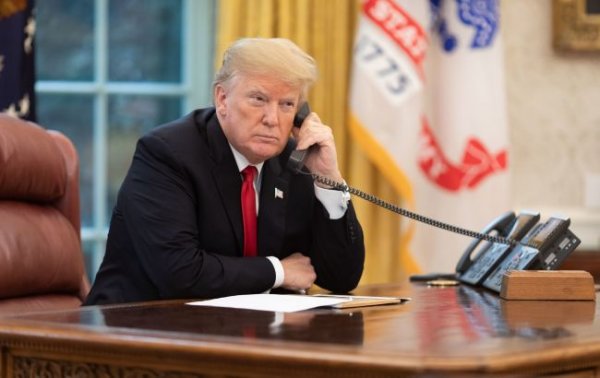
Photo: Donald Trump, US President (Getty Images) Author: Maria Kucheryavets
The topic of a ceasefire between Ukraine and Russia was the leitmotif of a series of meetings in Saudi Arabia. As a result, an energy ceasefire was agreed upon with the mediation of the United States
Read the RBC-Ukraine article below to find out whether the agreements are working and what the US, Ukraine and Russia are saying about the ceasefire.
Content
- From a complete ceasefire to an energy truce
- Position of Ukraine
- What they say at Putin's
- US Position on the War in Ukraine
From a complete ceasefire to an energy truce
Over the past few months, several meetings have taken place involving US delegations, which, as part of “shuttle diplomacy”, separately negotiated with Ukraine and the Russian Federation. Thus, on February 18, 2025, a high-level US-Russian meeting took place in Riyadh (the capital of Saudi Arabia).
The American side was led by US Secretary of State Marco Rubio, and the Russian side by Foreign Minister Sergey Lavrov. The main topic of their discussion was improving relations between the two countries and finding ways to end the war in Ukraine.
Notably, the Ukrainian delegation was not invited to the summit, causing concern in Kyiv. US President Donald Trump dismissed these concerns, hinting at Ukraine's “responsibility” for starting the conflict.
However, on March 11, 2025, a meeting between the US and Ukrainian delegations took place in Jeddah, Saudi Arabia. During these negotiations, the Americans proposed a 30-day ceasefire along the entire front line with the possibility of extension.
Ukrainian President Volodymyr Zelensky, who initially proposed a ceasefire in the sky and at sea, praised the initiative. Thus, Ukraine agreed to such a step, but only on the condition that Russia would agree to it. In response to Kyiv's agreement, the Americans announced the resumption of military aid and intelligence sharing with Ukraine.
After which the US took it upon itself to convey the essence of the negotiations to the Kremlin. Trump sent his special envoy Steve Witkoff to Russian dictator Vladimir Putin, through whom the Kremlin conveyed its own “signals” to the US president, the essence of which was not disclosed.
Putin himself publicly said that he allegedly “agreed” with the idea of a ceasefire, but at the same time spoke about “nuances,” namely the need to stop mobilization in Ukraine and “re-equip” the Ukrainian Armed Forces.
Kremlin media also wrote that the dictator allegedly demanded a complete halt to military aid to Ukraine. However, Trump denied this, saying that aid was not discussed at all.
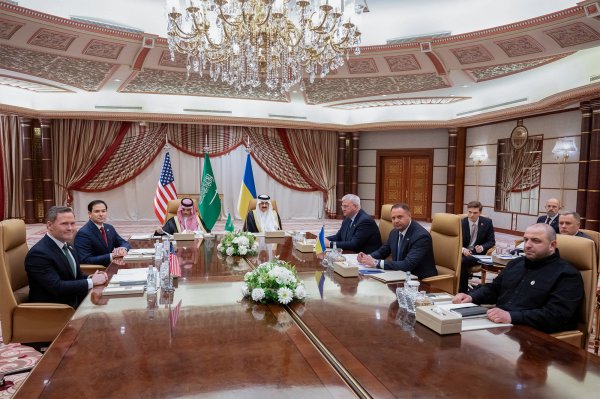
Photo: Meeting of Ukrainian and US delegations in Saudi Arabia on March 11 (Getty Images)
After Whitkoff's visit to Moscow, the US President and the head of the Kremlin spoke on the phone. Their telephone conversation took place on March 18 and lasted more than two hours. Trump said that he had agreed with Putin on an immediate ceasefire at all energy and infrastructure facilities.
“Shuttle diplomacy” continued. On March 23, the Ukrainian technical group held talks with the US, and on March 24, the Americans continued to hold talks with the Russians, after which on March 25, Washington again held consultations with Kiev.
The technical group meetings in Saudi Arabia on March 23-25 did not result in a comprehensive 30-day ceasefire as Trump had sought, but the parties agreed to end attacks on energy infrastructure and ensure the safety of shipping in the Black Sea.
However, in the case of Russia, as usual, it turned out that not everything is so clear-cut. The Kremlin once again began to put forward demands, they stated that the ceasefire in the Black Sea will come into effect after the lifting of sanctions from Rosselkhozbank and other Russian financial organizations involved in international food trade operations.
Position of Ukraine
As the president explained earlier, Ukraine agreed to the proposal for a comprehensive ceasefire with Russia (subject to the Kremlin's consent) in order to clearly show the world that Putin does not want peace. Zelensky explained that Kyiv initially proposed a ceasefire in the sky and at sea, since this is easier to control.
According to the head of state, a ceasefire could create a “window of opportunity” to develop a peace plan and end the war. However, this also requires appropriate steps from Russia, which obviously does not want peace.
Moreover, there was disagreement over the date of the ceasefire. Russia claimed that it began on March 18, following a phone call between Putin and Trump. Ukraine insists that the ceasefire began on March 25, following the conclusion of technical talks in Saudi Arabia. Washington's statement did not specify exact dates.
However, since then Russia has repeatedly attacked Ukrainian energy facilities, in particular in Kharkov and Kherson, in the latter yesterday the aggressor left 45 thousand residents without electricity. It should be noted that the OP warned the Russians of “symmetrical responses” if they violate the agreements.
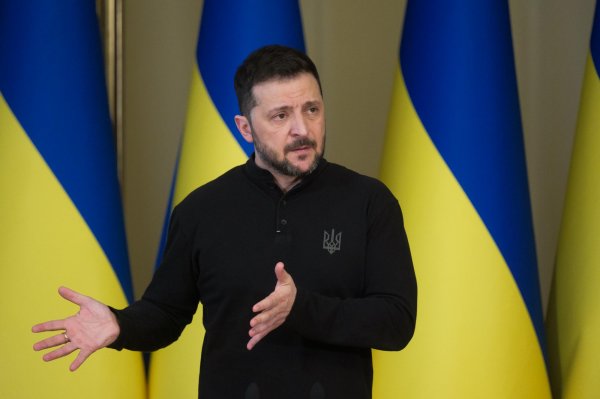
Photo: Zelensky called on partners to quickly put pressure on Russia (Vitaliy Nosach, RBC-Ukraine)
Today, after yet another targeted hit by the aggressor and damage to energy facilities, the President of Ukraine called for “pressuring” the Russian dictator to give a real order to stop the strikes, because after the US proposal for a ceasefire, the occupiers continue to strike.
“Now, after the last meeting in Saudi Arabia, in Jeddah, absolutely everyone in the world understands that Russia is the only one who is dragging out this war. The only one who brought it here and who needs to continue it. Since March 11, there has been a proposal for an unconditional ceasefire, and such strikes would have already stopped. But it is Russia that is continuing all this,” Zelensky said.
According to the head of state, Ukraine has provided the United States with confirmation of Russia's strikes on energy infrastructure, which violates the ceasefire agreement and is awaiting an appropriate response from Washington.
What they say at Putin's
The Kremlin says that Putin supported Trump's proposal and, after a conversation with him on March 18, allegedly “gave the military the corresponding order” to stop attacks on energy for a period of 30 days.
The Russian Defense Ministry even cynically stated that after Putin's order they “shot down” their own drones that were flying over energy facilities in the Nikolaev region. However, in reality that night the Russians attacked energy facilities, transport, hospitals and urban infrastructure in Ukraine.
Moscow cynically accuses Kyiv of violating the agreements. Yesterday, Russian Foreign Minister Lavrov complained about Ukraine to the United States, the UN and the OSCE over what he called “Ukraine's violation of the agreement on the inadmissibility of attacks on energy infrastructure.”
“Energy facilities have been under attack all this time, possibly with a break of one or two days. We have given this list to US presidential aide Mike Walz. I have forwarded it to US Secretary of State Marco Rubio, our representatives in the UN and OSCE,” Lavrov said.
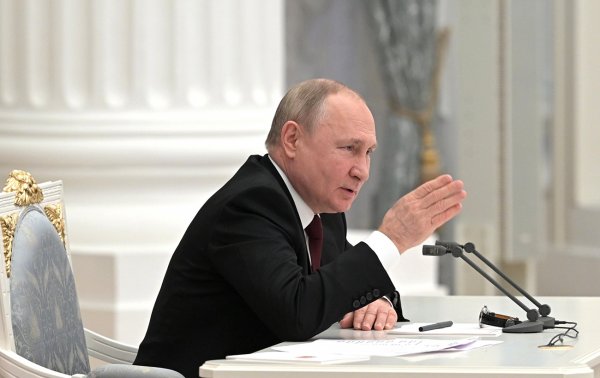
Photo: Putin deliberately sets conditions to stall for time (Getty Images)
Russia is also beginning to criticize Trump's approach to ending the war in Ukraine.
“The US position on Ukraine does not yet include a requirement to resolve problems related to the root causes of the conflict; this must be overcome. Moscow takes Washington's proposals on Ukraine seriously, but cannot simply accept them as is,” said Deputy Foreign Minister Sergei Ryabkov.
The Kremlin also reproaches the US, accusing the American side of “not reacting” to Russian accusations that Ukraine is “violating” the energy ceasefire.
“The moratorium on strikes on Ukraine's energy sector continues to be in effect, and the Russian Federation is adhering to it. There has been no US reaction to the ongoing strikes by the Ukrainian Armed Forces on Russian energy facilities,” Peskov fantasized.
US Position on the War in Ukraine
As Western media write, Trump is trying to achieve a comprehensive ceasefire in Ukraine before Easter (April 20). However, so far he has not managed to force Russia to adhere even to the energy one.
In an interview with NBC, the US president said he was angry with Putin because he did not want to negotiate with Zelensky and questioned his legitimacy (the Russian dictator proposed establishing external control of the UN and other countries in Ukraine in order to hold elections).
“If we can't make a deal with Russia to stop the bloodshed in Ukraine, and if I think it's Russia's fault… I will impose secondary tariffs on oil, on all oil coming from Russia,” NBC quotes Trump as saying.
The White House chief noted that tariffs against Russia would come into force within a month if there is no ceasefire agreement. He also said that he was going to talk to Putin again.
It is noteworthy that after a seven-hour meeting with the US President over a game of golf, Finnish President Alexander Stubb said that Washington is developing sanctions against Russia in the event of its refusal to observe the ceasefire in Ukraine or its violation.
At the same time, the White House says that Trump is unhappy with the statements on the war made by both Putin and Zelensky.
“He expressed his frustration with the comments from leaders on both sides of this conflict. He expressed what he believes needs to happen to bring this conflict to an end. He continues to work hard on that, and our teams continue to work hard,” White House press secretary Caroline Levitt said.
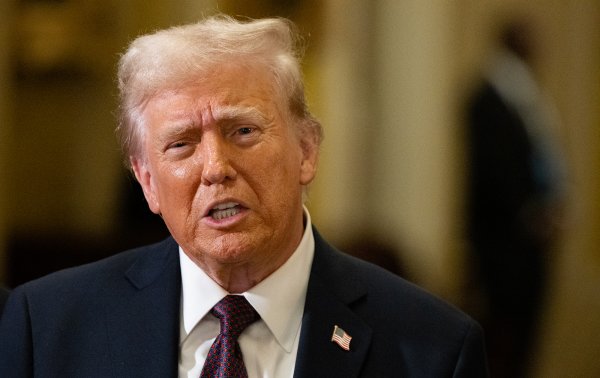
Photo: Trump says there is a 'psychological deadline' for Russia to agree to deal (Getty Images)
At the same time, according to Fox News, the US President is disappointed with Putin's position and believes that Russia is deliberately delaying comprehensive ceasefire negotiations.
The Trump administration does not rule out that the United States will not be able to conclude a peace agreement on Ukraine in the next few months and is developing new mechanisms to put pressure on both Kyiv and Moscow, Reuters writes.
“I'm told that enforcement is low right now — informally rated at about a '3 out of 10' — and interdicting Russia's 'shadow fleet' that transports illicit oil through the Baltic Sea would be an easy target for pressure,” Fox News White House correspondent Jackie Heinrich said.
Meanwhile, Kirill Dmitriev, head of the Russian Direct Investment Fund (RDIF) and one of the Kremlin's negotiators, is planning to visit Washington. His visit was announced by CNN, citing sources. According to the media, Dmitriev may meet with Witkoff, and the parties will discuss relations between the two countries, as well as ending the war against Ukraine.
Because Dmitriev is under US sanctions, the US government temporarily lifted the restrictions to allow the State Department to issue the Russian official a visa, CNN reports. This will mark the first official visit by a senior Russian official to the US since Russia's full-scale invasion of Ukraine.
Meanwhile, according to Bloomberg, the US Congress is preparing new sanctions against Russia if Putin does not agree to a ceasefire. A group of 50 US senators (25 from Republicans and Democrats) introduced a bill with sanctions against Moscow. They will come into force if the Kremlin refuses to negotiate a ceasefire or thwarts a possible agreement.
The sanctions include a 500% customs duty on imports from countries that buy oil, gas or uranium from Russia, a ban on US citizens investing in Russian bonds and restrictions on any financial institutions associated with the Russian government.
The following publications were used in preparing this material: Associated Press, CNN, Reuters, Fox News, NBC, Bloomberg.
Read urgent and important news about Russia's war against Ukraine on the RBC-Ukraine channel in Telegram.
